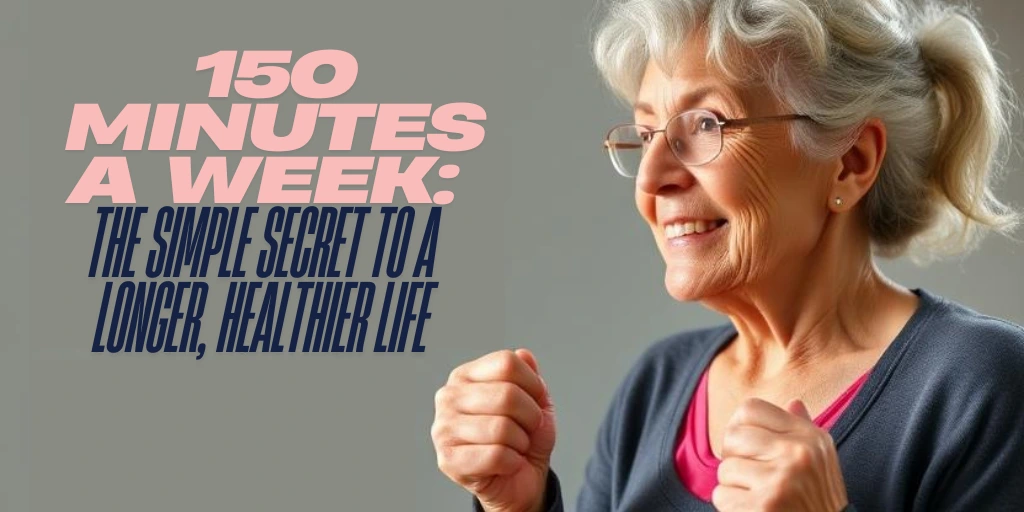150 Minutes a Week: The Simple Secret to a Longer, Healthier Life
What if you could extend your life by dedicating just 21 minutes a day to movement? Science reveals that 150 minutes of weekly exercise—a number endorsed by global health experts—could be your ticket to a longer, more vibrant future. Let’s explore why this manageable goal is a game-changer and how to weave it into even the busiest schedules.
Why 150 Minutes? The Science Behind the Sweet Spot
Health organizations like the World Health Organization (WHO) emphasize 150 minutes of moderate-intensity activity weekly for good reason. This benchmark isn’t plucked from thin air—it’s the culmination of decades of research. Studies consistently show that hitting this target slashes the risk of chronic illnesses like heart disease, diabetes, and cancer while boosting mental resilience.
For instance, a groundbreaking 2022 analysis in The Lancet found that adults who consistently logged 150 active minutes weekly had a 19% lower risk of early mortality compared to sedentary peers. Even better? The benefits aren’t all-or-nothing. A brisk 10-minute walk or a dance break with your toddler contributes to your weekly total.
How 150 Minutes Rewires Your Body for Longevity
- Heart Hero: Exercise acts like a tune-up for your cardiovascular system. It strengthens the heart muscle, improves blood flow, and helps regulate blood pressure—key factors in preventing heart disease, which claims 1 in 4 lives globally.
- Metabolic Mastery: Physical activity helps your body manage blood sugar and insulin levels, reducing the risk of type 2 diabetes. It also supports healthy weight management, which lowers inflammation linked to cancer and arthritis.
- Brain Boost: Movement triggers the release of serotonin and dopamine, neurotransmitters that combat stress and anxiety. A 2023 study in Nature Mental Health linked regular exercise to a 35% lower likelihood of depression.
- Age-Defying Effects: Exercise stimulates the production of antioxidants, which protect cells from damage. It also promotes telomere health—the “caps” on DNA strands that influence aging.
- Immunity Igniter: Moderate activity increases the circulation of infection-fighting white blood cells, helping you ward off colds, flu, and chronic inflammation.
Creative Ways to Hit 150 Minutes (No Marathon Required!)
Forget the “no pain, no gain” myth. “Moderate intensity” means breathing harder but still able to chat. Here’s how to make it fun and sustainable:
- Step into Fitness: Use a pedometer to turn walks into a game. Aim for 7,000–8,000 steps daily (about 30–40 minutes).
- Micro-Workouts: Do 5-minute bursts—march in place during TV ads, take the stairs at work, or squat while waiting for coffee.
- Family Fitness: Turn playtime into exercise. Kick a soccer ball, have a living room dance-off, or explore a new hiking trail.
- Household Hacks: Deep-clean your home (scrubbing floors counts!), rake leaves, or bike to the grocery store.
- Tech-Driven Moves: Try a 15-minute TikTok dance tutorial or a YouTube Pilates session.
The Longevity Ripple Effect
The perks of 150 minutes compound over time:
- Short-Term Wins (Weeks 1–4): Better sleep, sharper focus, and a mood lift from endorphins.
- Medium-Term Gains (3–6 Months): Improved muscle tone, lower LDL (“bad”) cholesterol, and steadier energy levels.
- Long-Term Rewards (Years): A stronger heart, denser bones, and a brain that stays sharper with age.
A 2021 study in BMJ Open Sport & Exercise Medicine found that people who maintained this habit for 10+ years had biological markers resembling someone 10 years younger!
Troubleshooting Your Fitness Journey
Barrier: “I’m too busy!”
Fix: Break it into 10-minute chunks. Walk during Zoom calls, stretch during lunch, or do calf raises while brushing your teeth.
Barrier: “Exercise feels like a chore.”
Fix: Reframe it as “movement” rather than “working out.” Garden, play tag with your dog, or take a sunset stroll.
Barrier: “I’m recovering from an injury.”
Fix: Opt for low-impact options like swimming, tai chi, or resistance band workouts approved by your physiotherapist.
Your Blueprint for Success
- Start Where You Are: If 10 minutes a day feels doable, begin there. Gradually add time as your stamina grows.
- Blend Variety: Mix cardio (walking), strength (bodyweight exercises), and flexibility (yoga) to keep things fresh.
- Track & Celebrate: Use a habit-tracking app or a simple sticky note on your fridge. Reward milestones with non-food treats, like a new playlist or massage.
- Buddy Up: Partner with a friend for accountability—text each other workout selfies or join a community fitness challenge.
The Bottom Line: Your Body Is Built to Move
Age is no barrier. A 2020 study in JAMA Network Open found that older adults who began exercising in their 60s still saw significant longevity benefits. Whether you’re dancing, gardening, or power-walking, those 150 minutes are an investment in a future where you’re not just alive—but thriving.
